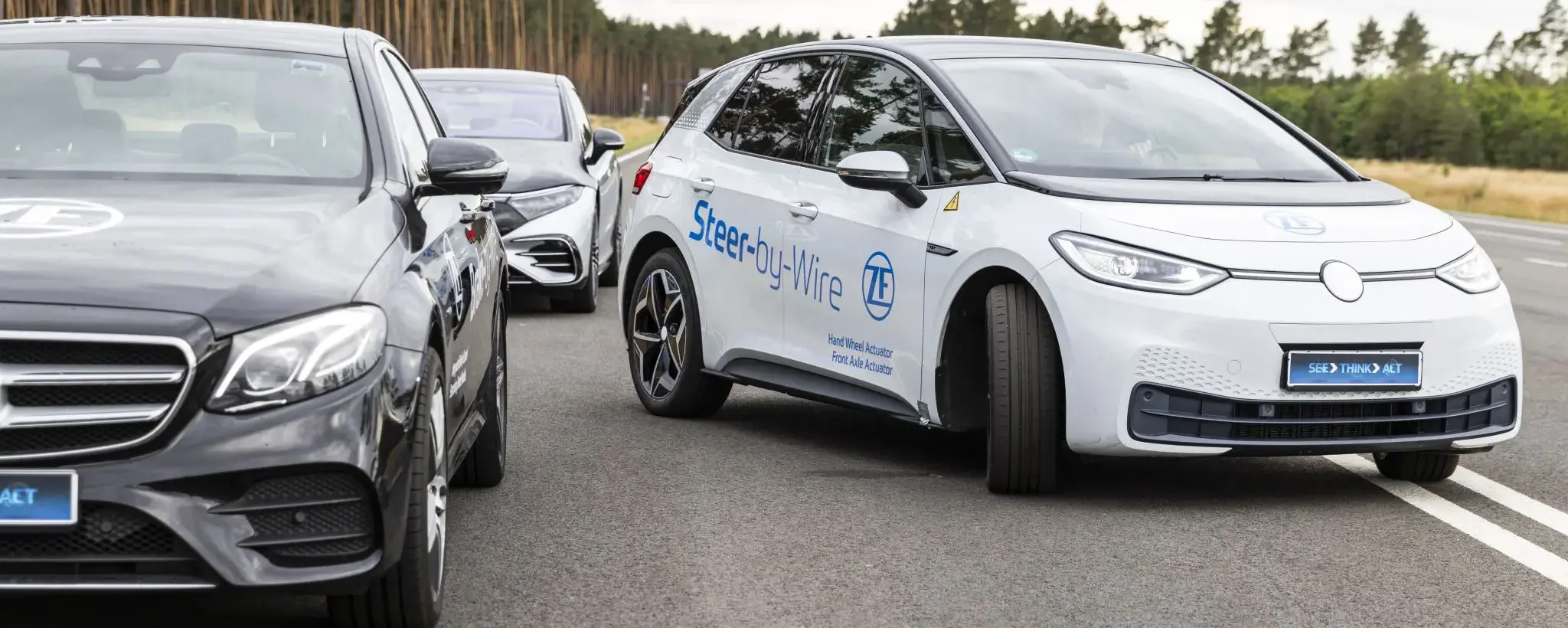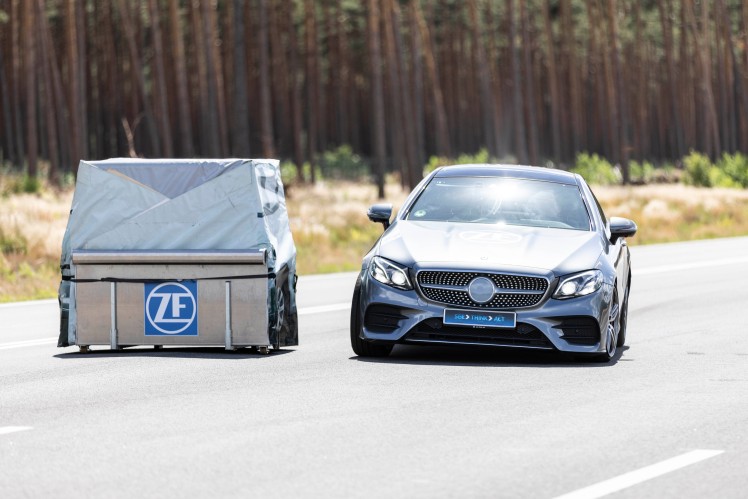Is all of this just wishful thinking? Not at all, since steer-by-wire (SbW) is coming. And this exciting new range of functions along with it. Both drivers and car manufacturers benefit from this new development; in every segment, from urban subcompact cars to sportscars all the way up to luxury SUVs. "Our agile team is working hard to bring this innovative, trend-setting technology to market maturity. SbW is particularly important for automated driving via autopilot," says Thilo Bitzer, Senior Vice President Global Steering Engineering at ZF.


The Networked Steer-by-Wire Steering System is Available Now
Min Reading Time
The driving experience, whether manual or assisted, brings ZF to a new level – as does automation. The steer-by-wire system gives ZF a greater latitude for development; this includes the fact that the intermediate steering shaft is no longer needed.
Steering system based on the electronic column
Steering system based on the electronic column
With regard to the components, one thing catches the eye: With real SbW, there is no longer a mechanical connection between the steering wheel and the steering gear. The intermediate steering shaft (the column) is no longer required. Traditionally, this shaft transmits the control movement to the steering gear of the front axle. The new system uses a different approach. An electromechanical actuator between the wheels is the sole source of the steering force. The actuator now ensures wheel deflection in the depths of the chassis. The driver's commands make their way there electronically "by wire".
The commands come from a steering wheel actuator in the cockpit. The actuator has sensors that detect the rotation, but it also has its own drive. The system reproduces the natural steering feel and feedback from the road. Steer-by-wire is basically the consistent further development of our electric power steering system. This innovation now has one less intermediate steering shaft and many more advantages," explains Bitzer.
"Our innovative team is working full steam to bring steer-by-wire to market maturity. SbW is crucial for automated driving via autopilot, in particular."
Steers better automatically and manually
Steers better automatically and manually
Steer-by-wire technology is a prerequisite for autonomous robo-shuttles that no longer require a steering wheel or a human driver. Incidentally, rear axle steering systems, such as Active Kinematics Control (AKC) by ZF, have been operating very successfully according to this principle for some time. And it has long been established as a fly-by-wire in passenger aircraft.
But let's get back to cars. SbW is the steering system of the future, as it paves the way for higher automation levels. In autopilot mode, it literally leaves the driver alone, as described above. SbW makes driving more enjoyable with today's standard manual and assisted driving. At the same time, it allows for more comfortable and safer steering. In terms of steering experiences – from sporty-direct to comfortable-relaxed – every setting is possible in the same car. The system can also translate the same steering wheel movement variably depending on the driving situation, i.e. for parking and at low city speeds, the wheels angle (very) strongly for the change of direction, while they angle only slightly at high highway speeds.
The system promotes driving safety along with other assistants. The car can be stabilized very efficiently in critical situations, if the rear of the car suddenly pulls to one side, for example. Drivers often react by turning the steering wheel too strongly or simply incorrectly. SbW compensates for this directly on the wheels, i.e. independently of the actual movement of the steering wheel. "For the first time, we are free to define what and how much of the assistance systems' interventions are noticeable on the steering wheel," emphasizes Bitzer.
Creates space and design options
Creates space and design options
SbW's additional advantages include gaining space in general and new design options in the cockpit. Upcoming electric and automated vehicle concepts will use SbW extensively. There is now more legroom because there is no longer a steering structure running through it. And the steering wheel can – as long as it is safe and reasonable – take on new forms. In particular, it is becoming smaller and thus saves more space. Starting with highly automated driving, in some cars the steering wheel will retreat demonstratively into the dashboard, on a "by wire" command, of course.
Steer-by-wire promotes new automobility
Steer-by-wire promotes new automobility
ZF makes it as easy as possible for vehicle manufacturers to switch to this technology. "We have developed SbW as a scalable and modular system. This means that it meets the requirements of various markets and customers. This is particularly important when it comes to integration into existing and future vehicle architectures," says Bitzer. In the future, it is even conceivable that a single central high-performance computer will control the SbW system in concert with all other driving dynamics functions. ZF is already demonstrating what this will look like with its cubiX software platform and the Chassis 2.0 concept. Steer-by-wire also defines the steering characteristics perfectly for a brand or a specific model using only the software. The mechanics can remain unchanged. And for right-hand drive variants – for example for Great Britain, Australia, Japan, India and South Africa – only the steering wheel actuator needs to be installed on the other side of the cockpit.
On the part of passive safety, SbW moves several things. The elimination of some mechanical steering components means firstly that there are fewer components that can endanger the occupants in the event of an accident. Secondly, it opens up new options for future installation positions of the driver airbag. Safety of course also means smooth functioning in operation. For this reason, ZF's steer-by-wire has all necessary fallback levels and safety concepts. "Compliance with all automotive standards and Cyber Security are our top priority," emphasizes Bitzer.
This steering innovation is also electric, intelligent, software-based and interconnected – like the cars of future generations. This makes steer-by-wire a groundbreaking system component of tomorrow's mobility. And also a system that seizes the opportunities of the industry transformation.

Steer-by-wire supports all levels of automated driving up to driverless mobility systems.







